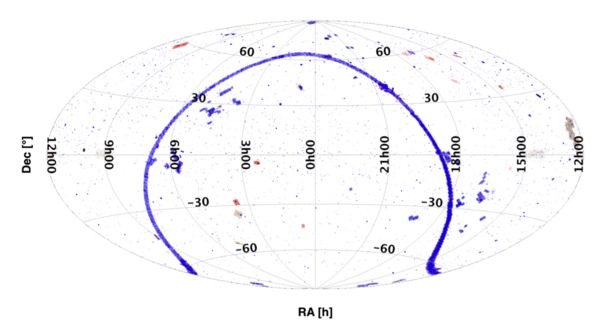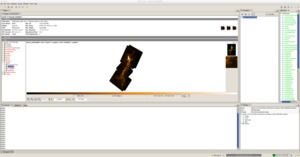Availability of the Herschel/PACS Point Source Catalog; Patch version of HIPE 15
In this issue
1. Availability of the Herschel/PACS Point Source Catalog
 We are pleased to announce the public release of the Herschel/PACS Point Source Catalog (HPPSC), containing close to half million entries spread between the three PACS bands.
We are pleased to announce the public release of the Herschel/PACS Point Source Catalog (HPPSC), containing close to half million entries spread between the three PACS bands.
The PACS instrument onboard Herschel mapped ~8% of the far-infrared sky. The broad-band filters were centered at 70, 100 and 160 μm, allowing an angular resolution of 5.6ʺ, 6.8ʺ and 11.3ʺ, respectively. A total number of 14,842 PACS maps were searched for catalogue sources, which were obtained as part of 430 different observing proposals, all performed in standard observing modes, but with a wide variety of science goals.
The HPPSC is available from the Infrared Science Archive (IRSA) using the Catalog Search Tool for Herschel catalog data, as well as from the Herschel Science Centre (HSC) web site at https://www.cosmos.esa.int/web/herschel/pacs-point-source-catalogue. The catalog from the HSC consists of three major tables, one HPPSC table for each band, provided as compressed comma-separated value format files. The 70, 100, and 160 μm catalogs consist of 108319, 131122, and 251392 entries, respectively. Two additional tables are provided in the same format: one is a list of slightly extended sources (HPESL) and one is a rejected source list (HPRSL), consisting of 546587 and 7185160 entries, respectively. Users can also access the catalog via the TAP (Table Access Protocol) service provided by the Herschel Science Archive through convenient VO tools, such as TOPCAT, as well as through ESASky.
The construction procedure, the content and validation processes are detailed in the HPPSC Explanatory Supplement. We emphasize the importance of this document in allowing users to perform valid scientific studies with the catalogue. As it was derived from far-infrared observations, the Galactic cirrus emission is a major limiting factor in photometric accuracy, completeness and reliability. Please read the Cautionary Notes carefully in order to be aware of the caveats on the provided products.
Image caption: The distribution of the detected sources in the HPPSC across the sky.
 A new version of the Herschel Interactive Data Processing Environment software (HIPE 15.0.1) is available for download at https://www.cosmos.esa.int/web/herschel/hipe-download. This patch version does not contain any new functionality with respect to HIPE 15.0.0, the 'legacy' version of the Herschel data reduction and data analysis software released in mid-January, but it has been created mainly to fix an important bug discovered only very recently affecting the fitBaseline task, used for the interactive baseline correction of HIFI data products, and another problem potentially affecting the sourceTimelineFitter task used by the SPIRE interactive data analysis software. Besides this, a few minor documentation updates have also been included in this version. None of the changes implemented affect the instrument pipelines or the legacy pipeline products contained in the Herschel Science Archive. For more detailed information about 'What's New in HIPE 15.0.1', please see http://herschel.esac.esa.int/twiki/bin/view/Public/HipeWhatsNew15x#Highlights. Please contact the NHSC Helpdesk or HSC Helpdesk if you have any problems during the downloading/installation process or with any other aspect of this new version of HIPE.
A new version of the Herschel Interactive Data Processing Environment software (HIPE 15.0.1) is available for download at https://www.cosmos.esa.int/web/herschel/hipe-download. This patch version does not contain any new functionality with respect to HIPE 15.0.0, the 'legacy' version of the Herschel data reduction and data analysis software released in mid-January, but it has been created mainly to fix an important bug discovered only very recently affecting the fitBaseline task, used for the interactive baseline correction of HIFI data products, and another problem potentially affecting the sourceTimelineFitter task used by the SPIRE interactive data analysis software. Besides this, a few minor documentation updates have also been included in this version. None of the changes implemented affect the instrument pipelines or the legacy pipeline products contained in the Herschel Science Archive. For more detailed information about 'What's New in HIPE 15.0.1', please see http://herschel.esac.esa.int/twiki/bin/view/Public/HipeWhatsNew15x#Highlights. Please contact the NHSC Helpdesk or HSC Helpdesk if you have any problems during the downloading/installation process or with any other aspect of this new version of HIPE.
Contact Us
Your feedback is welcome on any issue, please send your thoughts to:
nhsc@ipac.caltech.edu





